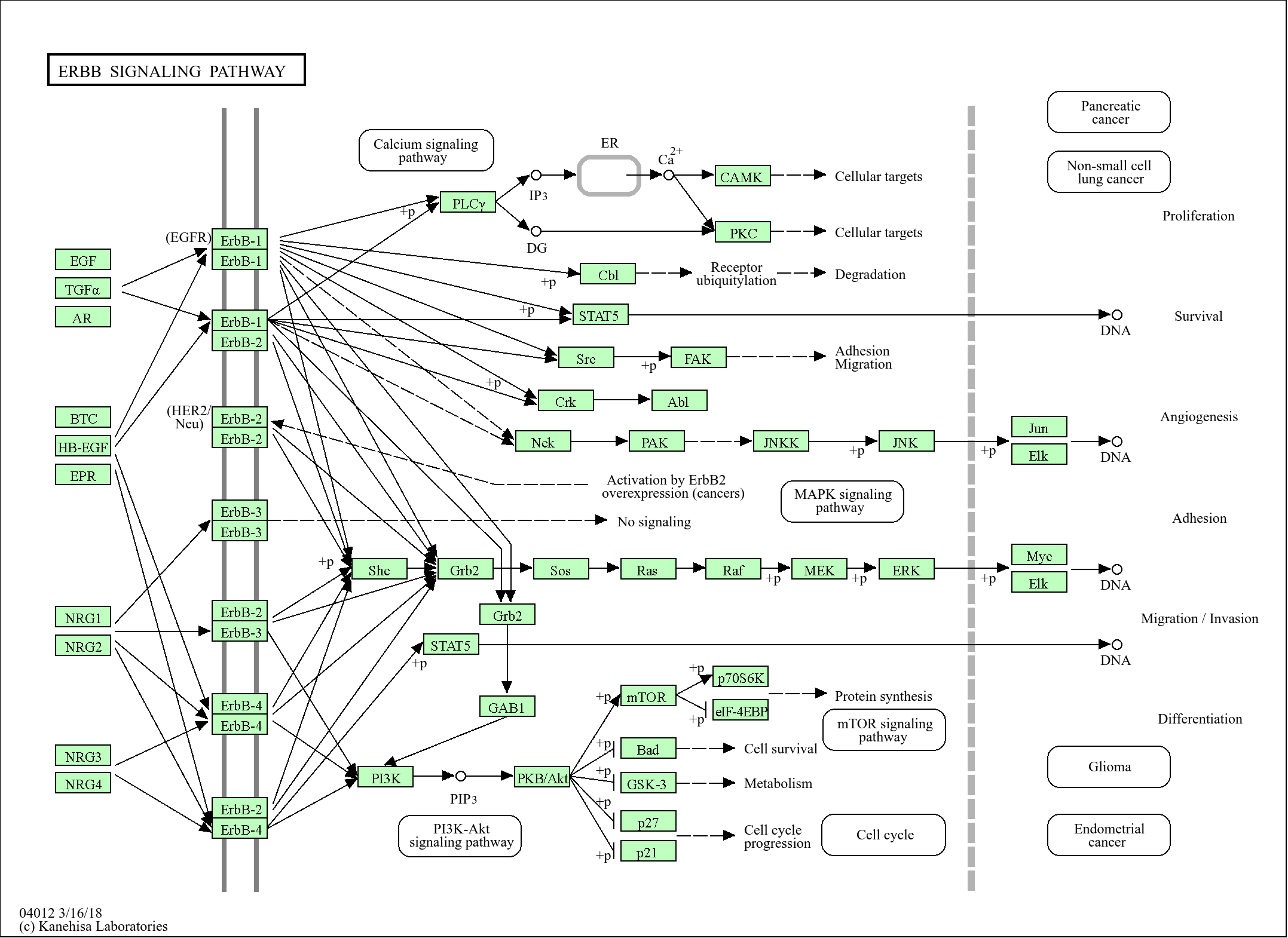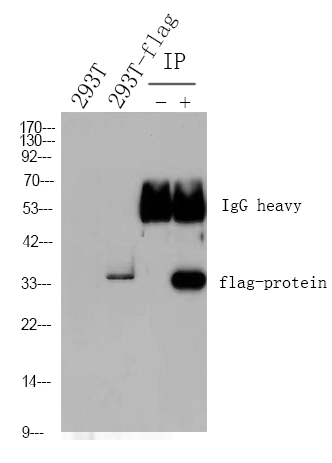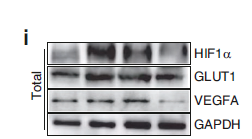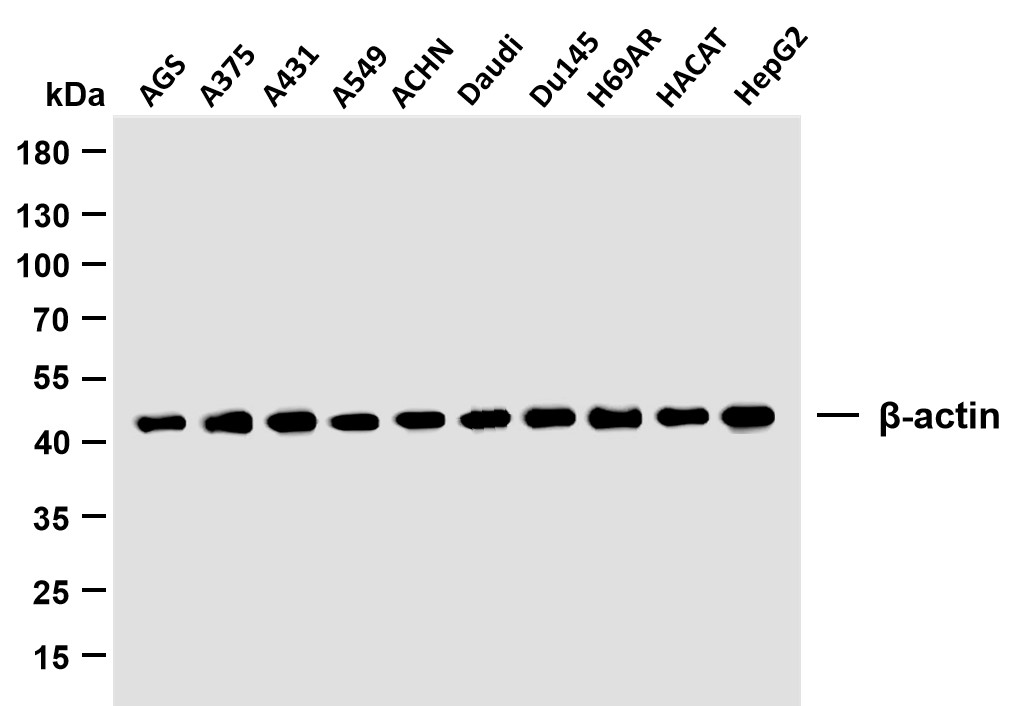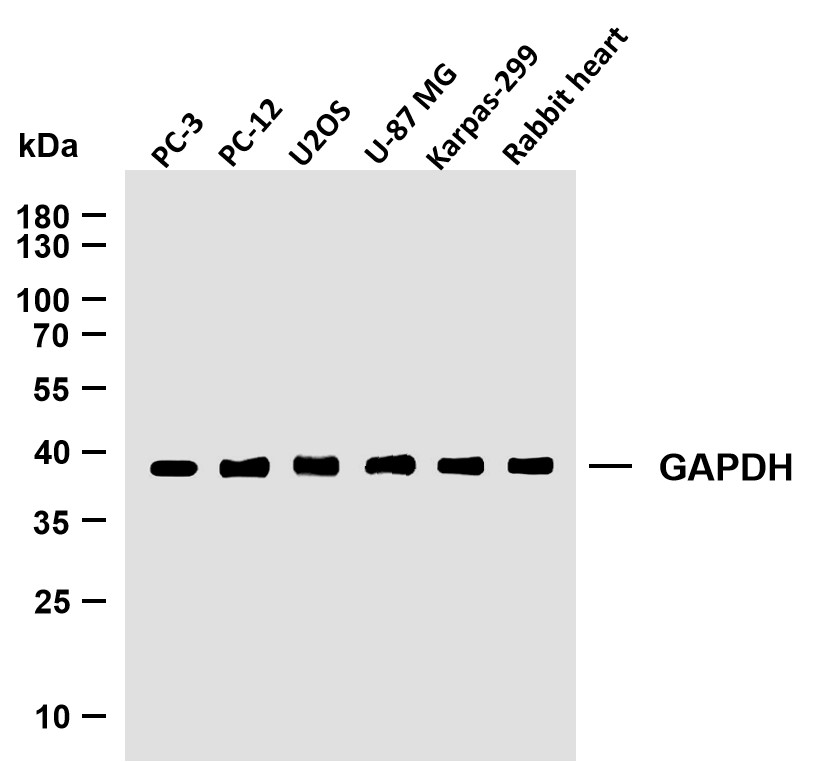
Catalog: YT5870
Size
Price
Status
Qty.
200μL
$450.00
In stock
0
100μL
$280.00
In stock
0
40μL
$150.00
In stock
0
Add to cart


Collected


Collect
Main Information
Target
Cytokeratin-pan
Host Species
Rabbit
Reactivity
Human, Mouse, Rat
Applications
WB, ELISA, IHC
MW
70kD (Observed)
Conjugate/Modification
Unmodified
Detailed Information
Recommended Dilution Ratio
WB 1:500-2000; IHC 1:50-300; ELISA 1:2000-20000
Formulation
Liquid in PBS containing 50% glycerol, 0.5% BSA and 0.02% sodium azide.
Specificity
The antibody detects endogenous Keratin-pan
Purification
The antibody was affinity-purified from rabbit antiserum by affinity-chromatography using epitope-specific immunogen.
Storage
-15°C to -25°C/1 year(Do not lower than -25°C)
Concentration
1 mg/ml
MW(Observed)
70kD
Modification
Unmodified
Clonality
Polyclonal
Isotype
IgG
Related Products
Antigen&Target Information
Immunogen:
Synthetic peptide from human protein at AA range: 150-220
show all
Specificity:
The antibody detects endogenous Keratin-pan
show all
Gene Name:
Keratin
show all
Protein Name:
Keratin
show all
Other Name:
KRT2 ;
KRT2A ;
KRT2E ;
Keratin, type II cytoskeletal 2 epidermal ;
Cytokeratin-2e ;
CK-2e ;
Epithelial keratin-2e ;
Keratin-2 epidermis ;
Keratin-2e ;
K2e ;
Type-II keratin Kb2 ;
KRT76 ;
KRT2B ;
KRT2P ;
Keratin, type II cytoskeletal 2 oral ;
Cytokeratin-2PCK-2P ;
K2P ;
Keratin-76 ;
K76 ;
Type-II keratin Kb9 ;
KRT3 ;
Keratin, type II cytoskeletal 3 ;
65 kDa cytokeratin ;
Cytokeratin-3 ;
CK-3 ;
Keratin-3 ;
K3 ;
Type-II keratin Kb3 ;
KRT5 ;
Keratin, type II cytoskeletal 5 ;
58 kDa cytokeratin ;
Cytokeratin-5 ;
CK-5 ;
Keratin-5
KRT2A ;
KRT2E ;
Keratin, type II cytoskeletal 2 epidermal ;
Cytokeratin-2e ;
CK-2e ;
Epithelial keratin-2e ;
Keratin-2 epidermis ;
Keratin-2e ;
K2e ;
Type-II keratin Kb2 ;
KRT76 ;
KRT2B ;
KRT2P ;
Keratin, type II cytoskeletal 2 oral ;
Cytokeratin-2PCK-2P ;
K2P ;
Keratin-76 ;
K76 ;
Type-II keratin Kb9 ;
KRT3 ;
Keratin, type II cytoskeletal 3 ;
65 kDa cytokeratin ;
Cytokeratin-3 ;
CK-3 ;
Keratin-3 ;
K3 ;
Type-II keratin Kb3 ;
KRT5 ;
Keratin, type II cytoskeletal 5 ;
58 kDa cytokeratin ;
Cytokeratin-5 ;
CK-5 ;
Keratin-5
show all
Database Link:
Background:
keratin 2(KRT2) Homo sapiens The protein encoded by this gene is a member of the keratin gene family. The type II cytokeratins consist of basic or neutral proteins which are arranged in pairs of heterotypic keratin chains coexpressed during differentiation of simple and stratified epithelial tissues. This type II cytokeratin is expressed largely in the upper spinous layer of epidermal keratinocytes and mutations in this gene have been associated with bullous congenital ichthyosiform erythroderma. The type II cytokeratins are clustered in a region of chromosome 12q12-q13. [provided by RefSeq, Jul 2008],
show all
Function:
developmental stage:Synthesized during maturation of epidermal keratinocytes and localized in the upper intermediate cells of fetal skin. Earliest expression is at 10 weeks in the developing embryo in the presumptive nail bed of developing digits, shifting to the proximal nail fold by 13.5 weeks. At 12.5 weeks, detected in scattered cells of the intermediate layer of trunk skin. At 19.3 weeks, regional expression patterns were observed in upper intermediate keratinocytes of cheek, trunk, dorsal and ventral knee, elbow and dorsal hand. Distal areas around the periumbilical region showed increased number of positive cells and by 15 weeks is expressed in small groups of cells in the fetal hair follicles.,Disease:Defects in KRT2 are a cause of ichthyosis bullosa of Siemens (IBS) [MIM:146800]. IBS is a rare autosomal dominant skin disorder displaying a type of epidermolytic hyperkeratosis characterized by generalized erythema and extensive blistering from birth. Large, dark gray hyperkeratoses are observed in later weeks. The skin of IBS patients is unusually fragile and has a tendency to shed the outer layers of the epidermis, producing localized denuded areas (molting effect). IBS usually improves with age so that in most middle-aged patients the hyperkeratosis and keratotic lichenification is limited to the flexural folds of the major joints.,Function:Probably contributes to terminal cornification. Associated with keratinocyte activation, proliferation and keratinization.,miscellaneous:There are two types of cytoskeletal and microfibrillar keratin: I (acidic; 40-55 kDa) and II (neutral to basic; 56-70 kDa).,online information:Keratin-2A entry,similarity:Belongs to the intermediate filament family.,subunit:Heterotetramer of two type I and two type II keratins. Associates with KRT10.,tissue specificity:Expressed in the upper spinous and granular suprabasal layers of normal adult epidermal tissues from most body sites including thigh, breast nipple, foot sole, penile shaft and axilla. Not present in foreskin, squamous metaplasias and carcinomas. Expression in hypertrophic and keloid scars begins in the deepest suprabasal layer. Weakly expressed in normal gingiva and tongue, however expression is induced in benign keratoses of lingual mucosa and in mild-to-moderate oral dysplasia with orthokeratinization.,
show all
Cellular Localization:
extracellular space,nucleus,cytoplasm,Golgi apparatus,intermediate filament,membrane,keratin filament,intermediate filament cytoskeleton,extracellular exosome,
show all
Reference Citation({{totalcount}})
Catalog: YT5870
Size
Price
Status
Qty.
200μL
$450.00
In stock
0
100μL
$280.00
In stock
0
40μL
$150.00
In stock
0
Add to cart


Collected


Collect
Recently Viewed Products
Clear allPRODUCTS
CUSTOMIZED
ABOUT US
Toggle night Mode
{{pinfoXq.title || ''}}
Catalog: {{pinfoXq.catalog || ''}}
Filter:
All
{{item.name}}
{{pinfo.title}}
-{{pinfo.catalog}}
Main Information
Target
{{pinfo.target}}
Reactivity
{{pinfo.react}}
Applications
{{pinfo.applicat}}
Conjugate/Modification
{{pinfo.coupling}}/{{pinfo.modific}}
MW (kDa)
{{pinfo.mwcalc}}
Host Species
{{pinfo.hostspec}}
Isotype
{{pinfo.isotype}}
Product {{index}}/{{pcount}}
Prev
Next
{{pvTitle}}
Scroll wheel zooms the picture
{{pvDescr}}

